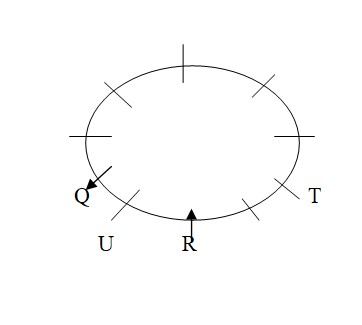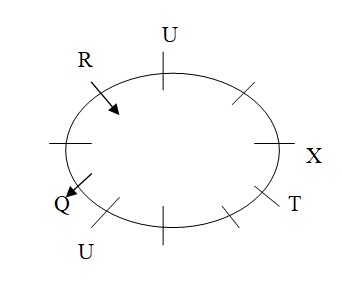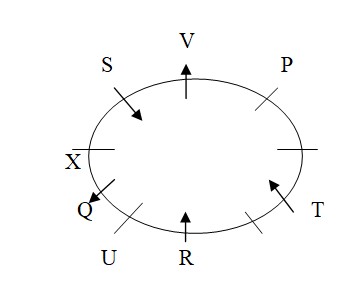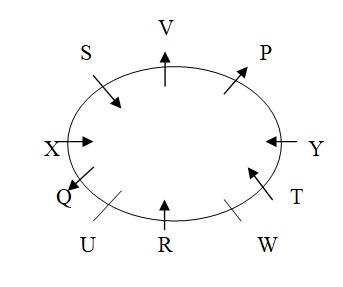Question
Who sits immediate right of the person, who sits 3rd to
the right of S? Answer the questions based on the information given below. Ten persons P, Q, R, S, T, U, V, W, X and Y sit around a circular table such that four of them face outside while others face towards the centre. No two persons with names starting with consecutive alphabets are immediate neighbors of each other. T sits 4th to the left of Q, who faces outside. U sits immediate left of R, who faces towards the centre. U and Y face same direction as X. X doesn’t face outside. Two persons sit between X and P, who doesn’t sit 2nd to the left of T. S and V sits immediate left of each other. X sits 3rd to the left of R. S and T face same direction. Y doesn’t sit adjacent to R. V and W face same direction as P.Solution
T sits 4th to the left of Q, who faces outside. U sits immediate left of R, who faces towards the centre. X sits 3rd to the left of R. So, T sits either 2nd to the right of R or 4th to the left of R. Also, X sits either immediate right of Q or 5th to the left of Q. Case I: T sits 2nd to the right of R:  Case II: T sits 4th to the left of R:
Case II: T sits 4th to the left of R:  Two persons sit between X and P, who doesn’t sit 2nd to the left of T. S and V sits immediate left of each other, this is not possible in case II, so case II is rejected. S and T face same direction. So, S and T face towards the centre and V faces outside.
Two persons sit between X and P, who doesn’t sit 2nd to the left of T. S and V sits immediate left of each other, this is not possible in case II, so case II is rejected. S and T face same direction. So, S and T face towards the centre and V faces outside.  Y doesn’t sit adjacent to R. V and W face same direction as P. U and Y face same direction as X. X doesn’t face outside. So, W faces outside and sits adjacent to R and Y sits immediate right of T. Also, U and Y face towards the centre and P face outside. The final seating arrangement is given below:
Y doesn’t sit adjacent to R. V and W face same direction as P. U and Y face same direction as X. X doesn’t face outside. So, W faces outside and sits adjacent to R and Y sits immediate right of T. Also, U and Y face towards the centre and P face outside. The final seating arrangement is given below: 
What was the trade deficit for India in December 2024?
What is the maximum loan amount available for systems between 3 kW and 10 kW under the Tata Power and Canara Bank partnership for rooftop solar installa...
What percentage stake did Japan’s Sumitomo Mitsui Banking Corporation (SMBC) acquire in Yes Bank?
Which of the following bank has been given approval to conduct government business?
According to SEBI’s proposed rules for Real Estate Investment Trusts (REITs), what financial instrument can REITs use to hedge against interest rate f...
Who is the current President of FIFA?
Who is the Chairman of the Central Board of Direct Taxes?
Identify the Capital Adequacy Ratio to be maintained by Payment Banks ?
Which film is India’s official entry to the 98th Academy Awards in the Best International Feature category?
Which Article of the Indian Constitution prohibits discrimination by the State on grounds of religion, race, caste, sex, or place of birth?
Relevant for Exams:


